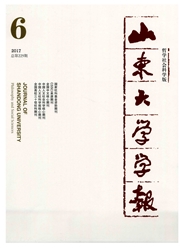

 中文摘要:
中文摘要:
文化产业是朝阳产业和战略新兴产业,也是转型经济中各级政府竞争的产业载体之一。自1978年至今我国文化产业政策的变迁路径,本质上导源于中国式分权下中央与地方政府、地方政府之间的竞争与博弈。本文运用面板数据模型从政策解构角度实证考量文化产业政策有效性。研究发现:财政政策工具促进了文化产业发展;由中央政府和地方政府颁布的不同层级文化产业政策具有时效性差异,并呈现总体意义上的时滞特征;文化产业政策空间分布凸现东中西区域性差异并显示出差异有效性。这些发现对于匡正政府部门的竞争行为与优化文化产业发展环境具有现实价值。
 英文摘要:
英文摘要:
Cultural industry is not only a sun-rising and strategic emerging industry, but also a carrier industry competed by governments at all levels in transition economies. The transition path of our cultural industry policy since 1978 basically results from the competition and game between central and local governments, and among local governments. Based on the perspective of policy deconstruction, we conduct an empirical panel-data analysis to test the policy effectiveness, and find that fiscal policy tools promote the development of cultural industry, and there exist a timeliness difference between different levels of cultural industry policies and a feature of time-lag. We also find that the cultural industry policy distribution has area difference and effectiveness difference. These findings have practical value to correct the competitive behavior between government sectors and optimize the environment of cultural industry development.
 同期刊论文项目
同期刊论文项目
 同项目期刊论文
同项目期刊论文
 期刊信息
期刊信息
